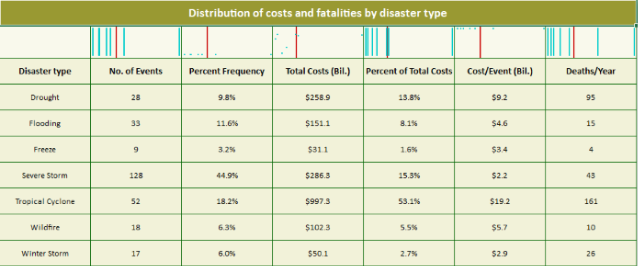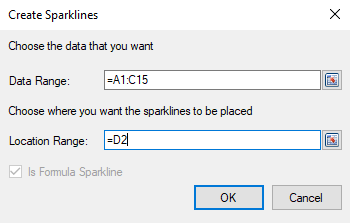-
Spread Windows Forms Product Documentation
- Getting Started
-
Developer's Guide
- Understanding the Product
- Working with the Component
- Spreadsheet Objects
- Ribbon Control
- Sheets
- Rows and Columns
- Headers
- Cells
- Cell Types
- Data Binding
- Customizing the Sheet Appearance
- Customizing Interaction in Cells
- Tables
- Understanding the Underlying Models
- Customizing Row or Column Interaction
- Formulas in Cells
-
Sparklines
- Add Sparklines Using Methods
-
Add Sparklines using Formulas
- Column, Line, and Winloss Sparkline
- Area Sparkline
- BoxPlot Sparkline
- Bullet Sparkline
- Cascade Sparkline
- Gauge KPI Sparkline
- Hbar and Vbar Sparkline
- Histogram Sparkline
- Image Sparkline
- Month and Year Sparkline
- Pareto Sparkline
- Pie Sparkline
- Scatter Sparkline
- Spread Sparkline
- Stacked Sparkline
- Vari Sparkline
- Keyboard Interaction
- Events from User Actions
- File Operations
- Storing Excel Summary and View
- Printing
- Chart Control
- Customizing Drawing
- Touch Support with the Component
- Spread Designer Guide
- Assembly Reference
- Import and Export Reference
- Version Comparison Reference
Spread Sparkline
Spread sparklines can be used to distribute data and compare them using different styles as shown in the image below.

When the sparkline is horizontal, the horizontal axis represents each point. The length of lines or the number of dots in the vertical axis represents the frequency of occurrence.
The spread sparkline formula has the following syntax:
=SPREADSPARKLINE(points, [showAverage, scaleStart, scaleEnd, style, colorScheme, vertical])
The formula options are described below where only 'points' is the default parameter:
Option | Description |
|---|---|
points | A reference that represents a range of cells that contains the values, such as "A1:A10". |
showAverage Optional | A boolean that represents whether to show the average. The default value is false. |
scaleStart Optional | A number that represents the minimum boundary of the sparkline. The default value is the minimum of all values. |
scaleEnd Optional | A number that represents the maximum boundary of the sparkline. The default value is the maximum of all values. |
style Optional | A number that references the style of the Spread sparkline. The following six styles are supported:
The default value is 4 (poles). |
colorScheme Optional | A string that represents the color of the sparkline. The default value is "#646464". |
vertical Optional | A boolean that represents whether to display the sparkline vertically. The default value is false. |
Usage Scenario
Consider a scenario where the disaster management department of a country wants to share the cost distribution and the fatalities suffered in different disasters that occurred through the years. A spread sparkline can help to display the various statistics involved with calamities, as shown in the image below.
Spread Sparkline

// Get sheet
var worksheet = fpSpread1_Sheet1.AsWorksheet();
// Set data
worksheet.SetValue(2, 0, new object[,]
{
{ "Disaster type","No. of Events","Percent Frequency","Total Costs (Bil.)","Percent of Total Costs","Cost/Event (Bil.)","Deaths/Year" },
{"Drought",28, 0.098, 258.9,0.138,9.2, 95 },
{"Flooding",33, 0.116,151.09,0.081,4.6, 15},
{"Freeze",9,0.032,31.07,0.016,3.4,4},
{"Severe Storm",128,0.449, 286.3,0.153,2.2, 43},
{"Tropical Cyclone",52, 0.182,997.3,0.531,19.2,161},
{"Wildfire",18,0.063,102.3,0.055,5.7,10},
{"Winter Storm",17,0.060,50.1,0.027,2.9, 26}
});
// Set SpreadSparkline formula
worksheet.Cells["B2"].Formula = "SPREADSPARKLINE(B4:B10,TRUE,,,1,\"#00cccc\")";
worksheet.Cells["C2"].Formula = "SPREADSPARKLINE(C4:C10,TRUE,,,2,\"#00cccc\")";
worksheet.Cells["D2"].Formula = "SPREADSPARKLINE(D4:D10,TRUE,,,3,\"#00cccc\")";
worksheet.Cells["E2"].Formula = "SPREADSPARKLINE(E4:E10,TRUE,,,4,\"#00cccc\")";
worksheet.Cells["F2"].Formula = "SPREADSPARKLINE(F4:F10,TRUE,,,5,\"#00cccc\")";
worksheet.Cells["G2"].Formula = "SPREADSPARKLINE(G4:G10,TRUE,,,6,\"#00cccc\")";'Get sheet
Dim worksheet = FpSpread1.Sheets(0).AsWorksheet()
'Set data
worksheet.SetValue(2, 0, New Object(,) {
{"Disaster type", "No. of Events", "Percent Frequency", "Total Costs (Bil.)", "Percent of Total Costs", "Cost/Event (Bil.)", "Deaths/Year"},
{"Drought", 28, 0.098, 258.9, 0.138, 9.2, 95},
{"Flooding", 33, 0.116, 151.09, 0.081, 4.6, 15},
{"Freeze", 9, 0.032, 31.07, 0.016, 3.4, 4},
{"Severe Storm", 128, 0.449, 286.3, 0.153, 2.2, 43},
{"Tropical Cyclone", 52, 0.182, 997.3, 0.531, 19.2, 161},
{"Wildfire", 18, 0.063, 102.3, 0.055, 5.7, 10},
{"Winter Storm", 17, 0.06, 50.1, 0.027, 2.9, 26}
})
'Set SpreadSparkline formula
worksheet.Cells("B2").Formula = "SPREADSPARKLINE(B4:B10,TRUE,,,1,""#00cccc"")"
worksheet.Cells("C2").Formula = "SPREADSPARKLINE(C4:C10,TRUE,,,2,""#00cccc"")"
worksheet.Cells("D2").Formula = "SPREADSPARKLINE(D4:D10,TRUE,,,3,""#00cccc"")"
worksheet.Cells("E2").Formula = "SPREADSPARKLINE(E4:E10,TRUE,,,4,""#00cccc"")"
worksheet.Cells("F2").Formula = "SPREADSPARKLINE(F4:F10,TRUE,,,5,""#00cccc"")"
worksheet.Cells("G2").Formula = "SPREADSPARKLINE(G4:G10,TRUE,,,6,""#00cccc"")"Using the Spread Designer
Type data in a cell or a column or row of cells in the designer.
Select a cell for the sparkline.
Select the Insert menu.
Select a sparkline type.
Set the Data Range in the Create Sparklines dialog (such as =Sheet1!$E$1:$E$3).
Alternatively, set the range by selecting the cells in the range using the pointer.

You can also set additional sparkline settings in the dialog if available.
Select OK.
Select Apply and Exit from the File menu to save your changes and close the designer.


